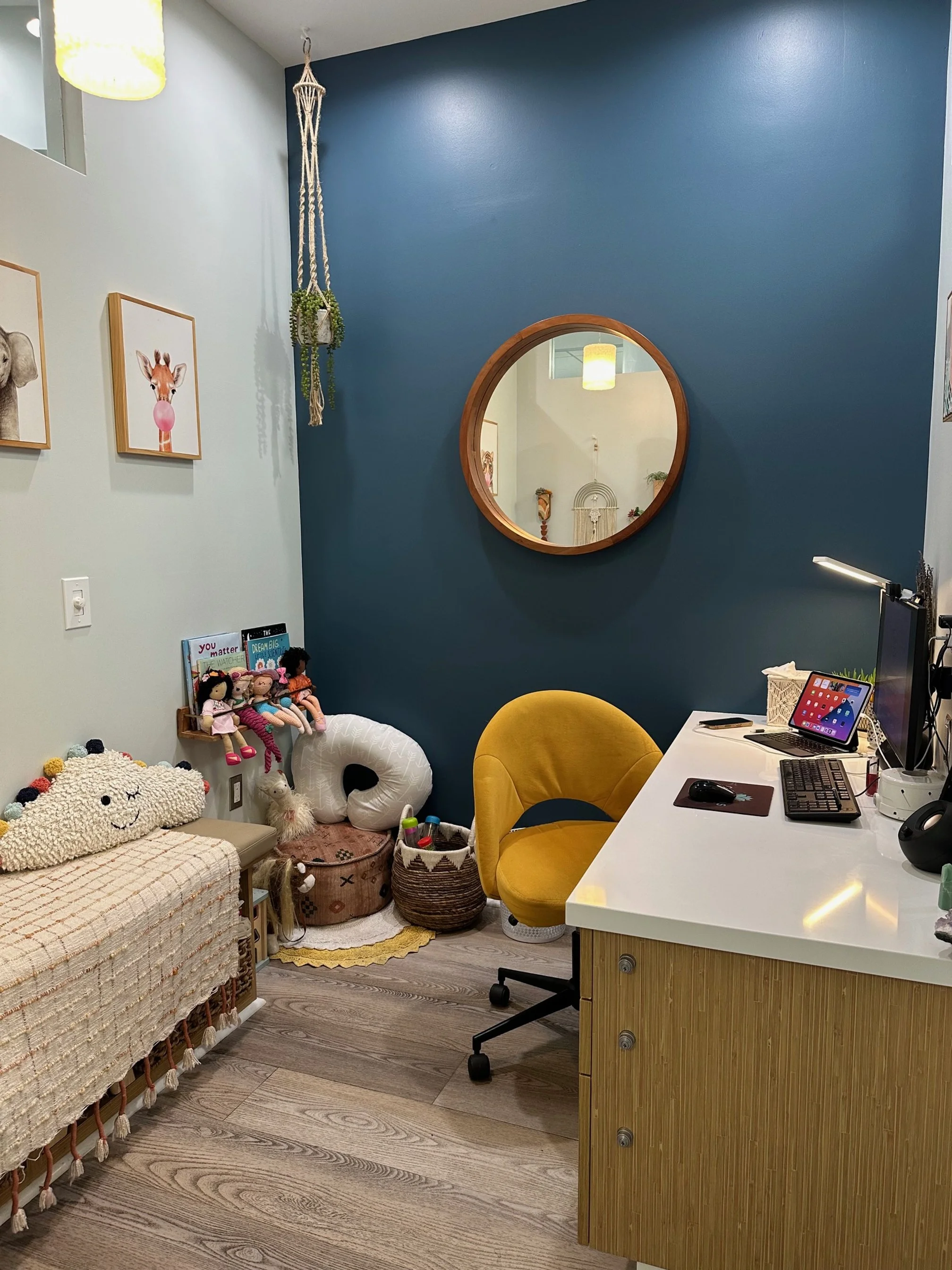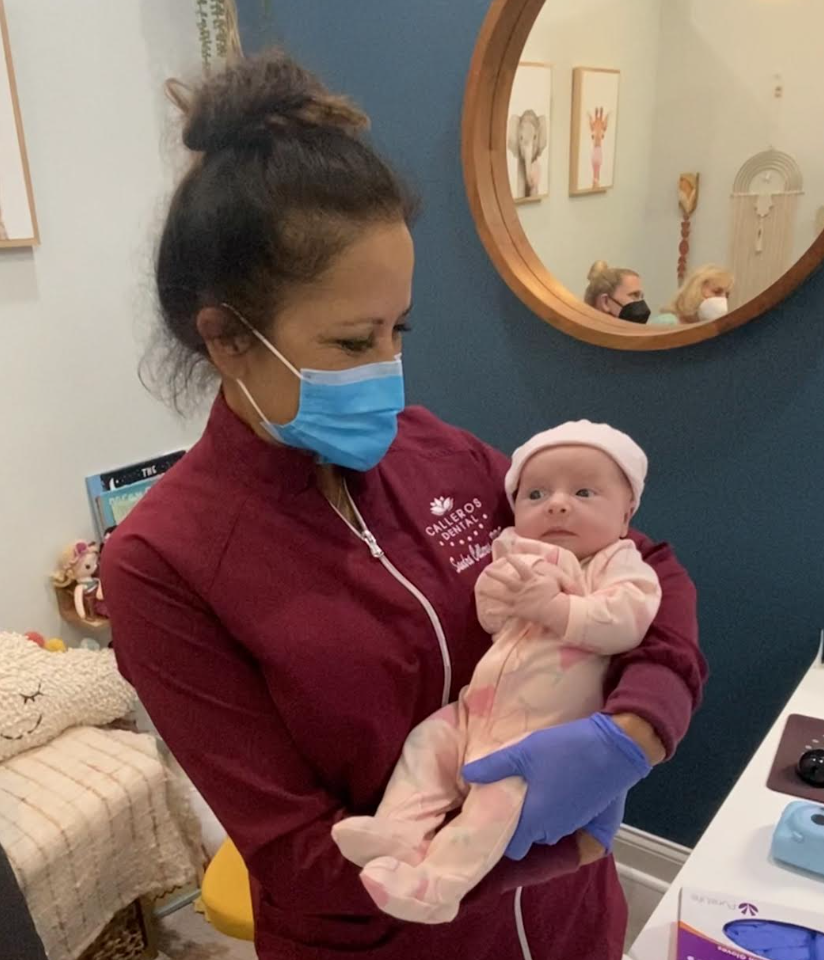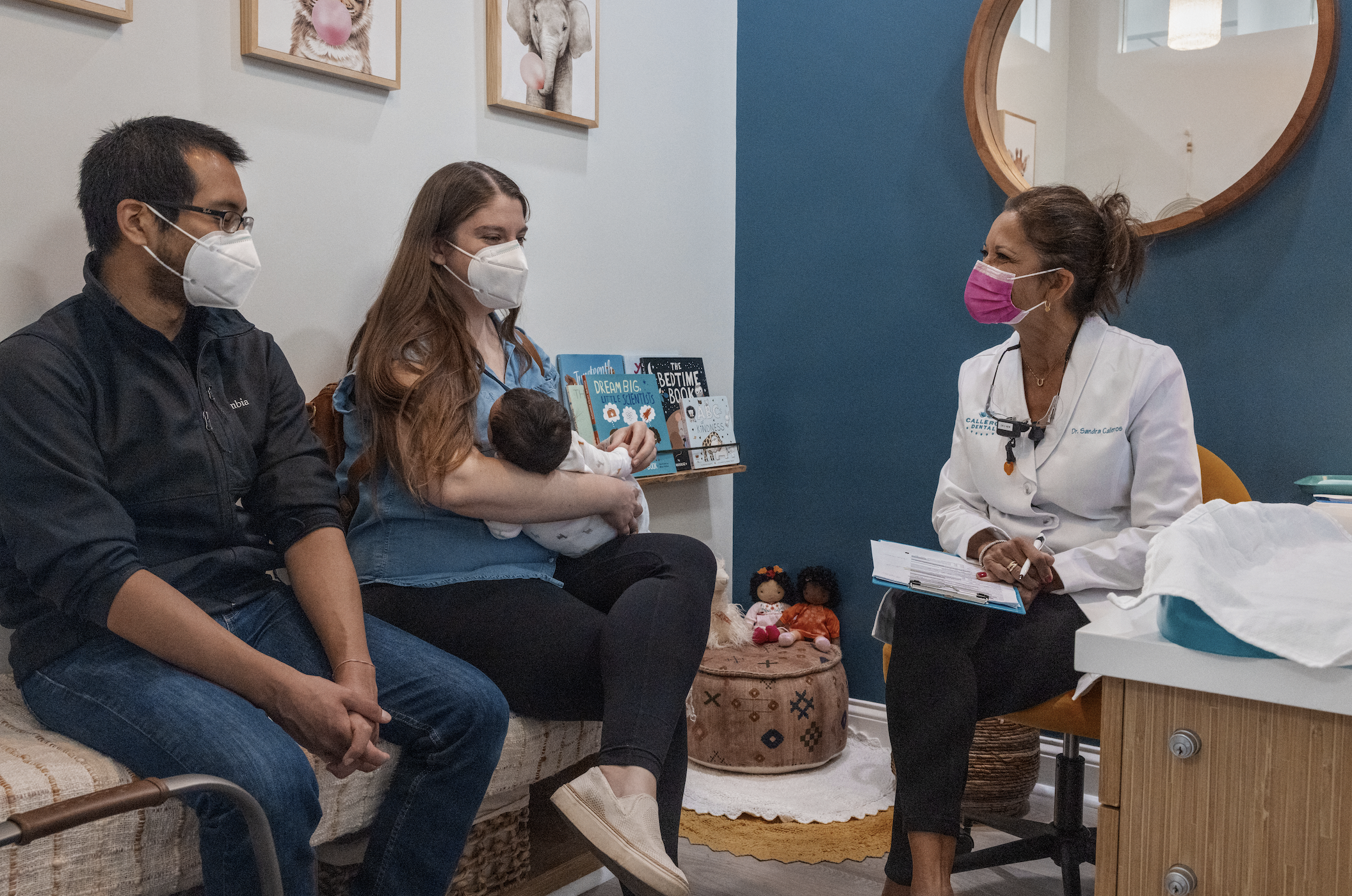
Tongue-Tie Procedure for Infants
At Calleros Dental, we know how much love and care you pour into your baby’s well-being—and we’re here to support you every step of the way. When it comes to treating infant tongue-ties, we take a gentle, team-based approach, working closely with trusted professionals like lactation consultants, craniosacral therapists, oral motor therapists, and pediatric chiropractors. Together, we create a circle of care around your little one, helping to ensure a smoother healing process and the best possible outcome for feeding, comfort, and development. Because when your baby thrives, you can breathe a little easier—and that matters to us.
Making Space for Families
At Calleros Dental, we understand how important it is for you and your baby to feel safe, supported, and at ease—especially during something as personal as a tongue-tie consultation. That’s why Dr. Calleros has lovingly created a special space just for families like yours. This child-friendly room is warm, calming, and thoughtfully designed to help both parents and little ones feel comfortable the moment they walk in. From cozy seating to a gentle, welcoming atmosphere, every detail is here to make your visit feel reassuring, relaxed, and centered around your family’s needs.
““Dr. Calleros is the only dentist I trust to work on my daughter. She’s 6 months old and did her tongue-tie release, it was a breeze and she didn’t even cry. So glad I did it.””
Understanding the Symptoms
Some babies with tongue and lip ties are able to latch and breastfeed without difficulty—but for many, these ties can lead to frustrating challenges. It’s important to remember that every baby is different, and so is every feeding journey. The following signs are commonly seen in infants with tongue or lip ties, as well as in their mothers. However, these symptoms can also be related to other breastfeeding issues, so a thorough evaluation is always the best next step to finding answers and support.
Infants may exhibit:
noisy suckling or clicking
popping on and off the breast
leaking on the sides of the mouth
poor weight gain
coughing or gagging
lip blisters
gas pain
noisy breathing/snoring sounds when sleeping
reflux or colic symptoms
Mothers may experience:
flattened nipples after breastfeeding
nipple pain and damage
prolonged feedings
poor breast drainage
decreased milk production
A team of caring experts
We love working with babies and changing lives! Our dedicated team of infant tongue-tie experts is here to support your child’s health from the very beginning. Dr. Sandra Calleros, a highly sought-after provider in this field, is known for her gentle, caring approach and exceptional outcomes. Dr. Calleros, along with our myofunctional therapist, Stephanie Estrada, both find deep fulfillment in helping babies, children, and adults improve their health and quality of life through these procedures. We love collaborating with parents, pediatricians, myofunctional therapists and lactation consultants, and we are committed to helping infants feed, breathe, and thrive more comfortably.
Calleros Dental | Infant Frenectomy Home Care Instructions
Following a tongue- or lip-tie release (frenectomy), the right care can make all the difference in healing and feeding success. Below is our recommended home care routine, including pain management, wound care, and stretches.
Pain Management
Some soreness and fussiness are normal in the first few days. Infant Tylenol (acetaminophen) can help manage discomfort. Please consult your pediatrician before giving any medication.
Infant Tylenol Dosing Chart (160mg/5mL liquid)
For babies 12 weeks and older, unless otherwise directed by a doctor.
Baby's WeightDose of Tylenol6–11 lbs1.25 mL12–17 lbs2.5 mL18–23 lbs3.75 mL24–35 lbs5 mL
Can be given every 4–6 hours as needed, not to exceed 5 doses in 24 hours.
Never give Tylenol to an infant under 12 weeks old without medical supervision.
Avoid ibuprofen for babies under 6 months old.
Postoperative Care & Stretches
Stretching is key to prevent reattachment. It's normal for baby to fuss during stretches—you're not hurting them, just helping them heal.
Begin stretches 6 hours after the procedure.
Do them 3-4 times per day for 2-3 weeks.
Clean hands, short nails, and gentle but firm technique are important.
Basic Stretching Technique:
Upper Lip: Place your index finger inside your baby’s lip area making sure your finger is all the way up in the “pocket” directly on the wound. Sweep your finger up against the healing site 1-2x. This should take an only a few seconds.
Tongue Area: Use two fingers to gently lift the tongue up and back to expose the surgical site. Hold briefly, then scoop, push and lift across the area.
If you're unsure, we're happy to demonstrate in-office or via video support.
Comfort Techniques
Skin-to-skin contact
Baby-wearing
Warm baths
Breastfeeding, if possible, to soothe and comfort
Ice chips or a frozen breastmilk popsicle (for older babies)
Follow-Up and Team Support
Patients come in for follow up appointments on week and also two weeks after the procedure, along with any other members of the care team such as lactation consultants and body workers. We strongly recommend follow-up care with one of our trusted collaborative providers:
Lactation consultants for feeding evaluation
Bodyworkers such as craniosacral therapists or pediatric chiropractors
Our team is here to help you and your baby every step of the way—please reach out with any questions or concerns.
Questions on Tongue-Tie? Give us a call at (310) 414-9564.
We are currently accepting new patients.










